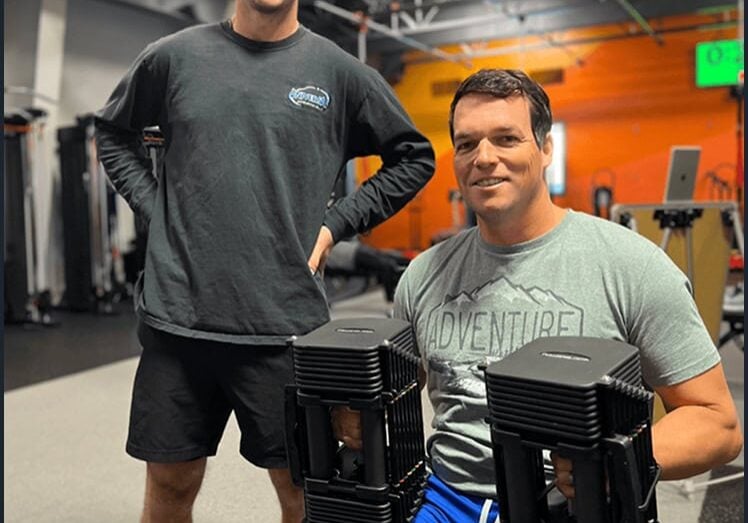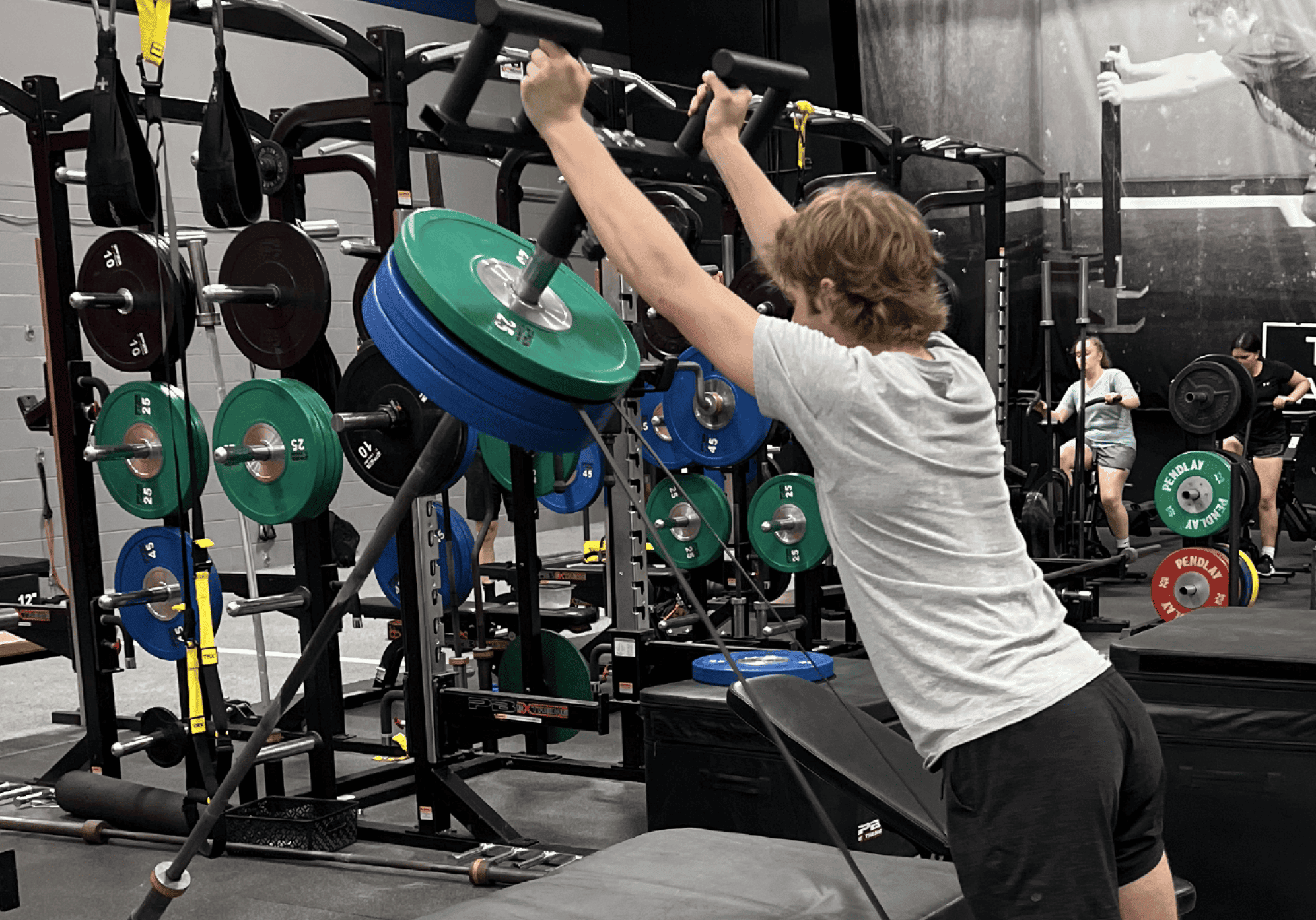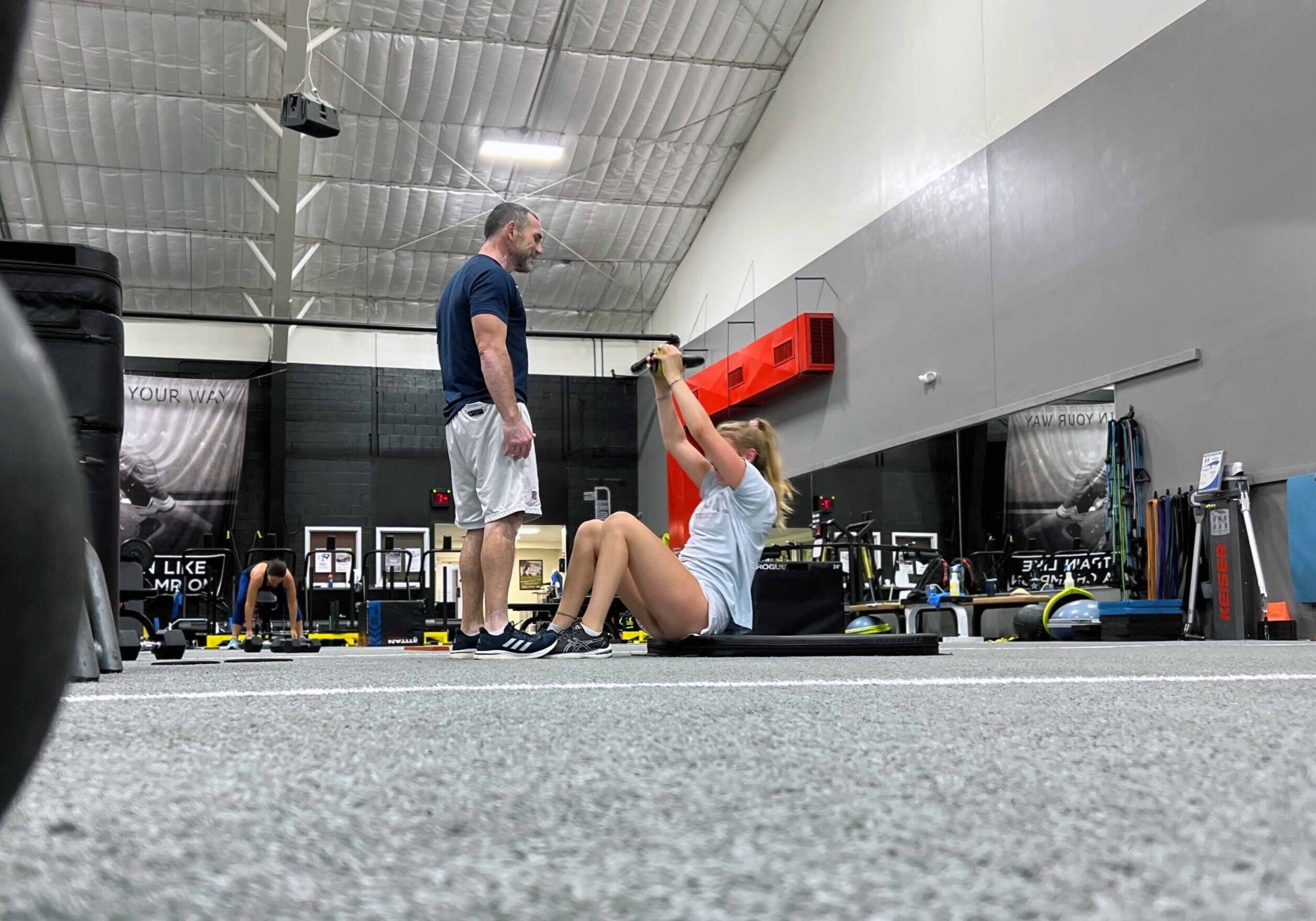Flawed Idea of “body weight’ before ‘weight’ Approach
One idea that has been preached for years by well-intended coaches and parents is that athletes should first master bodyweight training before performing exercises with weights. And while this may sound good on the surface – and while progressing gradually is indeed a good idea – the reality is that it’s actually an inherently flawed approach.
How so? Well, first, it doesn’t make much sense, at least logically speaking. The body is a weight, after all, which means all body weight exercises still require the body to handle (and lift) weight.
Let’s use the push-up as an example. When you’re doing a push-up, you need to lift up between 70-75% of your bodyweight from the bottom to the top. For a 150-pound. athlete, that would more-or-less equate to a 110-pound bench press. Are there differences? Perhaps, but not from an actual loading perspective. Moreover, the body and muscles don’t really care about the form of weight that’s being lifted; it only cares about the force needed to lift it. The same could be said about a handful of other exercises.
The second reason why the “bodyweight before weight” approach is flawed in sports performance is because, in many cases, using a weight as a feedback tool can actually improve lifting technique. For example, there are many athletes who struggle to perform an upright squat to a suitable depth (e.g., a deep squat) with their body weight alone. However, if you give them a light weight to hold out in front of them, their technique almost always improves immediately. Since it shifts their center of mass and requires them to express some “core stability,” the weight can serve as a magic tool to improve technique without any other intervention.
Lastly, avoiding exercises with weights can mean sacrificing a ton of potential benefits that could otherwise be achieved with weights. If an athlete can’t do more than a few push-ups, for example, keeping them in “push-up purgatory” at the expense of weight training will do little to improve their strength (not to mention, discourage them). This is a sub-optimal approach to getting stronger and improving their performance than, say, bench pressing with dumbbells or a barbell instead.
Not to mention, there are only so many bodyweight exercises, a short list of useful alternatives, and only so many ways to progress them, a combination that can make even the most enthusiastic athletes bored.
Besides, why avoid weights? The old myth that lifting is “bad for kids” or that doing so stunts growth has been debunked time and time again (with research showing the opposite, in many cases).
On the contrary, using weights to perform exercises with good form is going to have benefits across the board and help just about everything!
Ready to build game changing speed?
Interested in enrolling your kids in our sports performance classes or want to learn more? Visit our website to check the schedule and sign up today.





